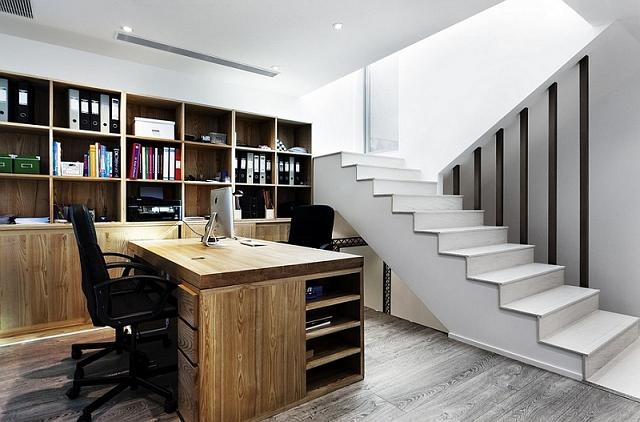
Amplifying the cellular signal indoors can be a valuable solution, so you don't miss any important calls and don't have to move outside every time. Many city offices and professional firms are located below ground level and complain of reception problems: this is the typical case in historic buildings, sometimes genuine works of art, but with walls so thick that they block mobile network signals.

1.Reception problems in a basement
In inner-city buildings, amplifying the cellular signal becomes a necessity when there is something preventing the signal from getting inside.
It is not so much the distance to the operators' radio base stations, which are usually found in good numbers in the city center.
The source of reception problems is in this case physical-structural and has to do with the shape and material with which buildings are constructed. "Outside I can make calls, but as I enter the office the bars go to zero!" we often hear.
Having focused on the cause, we can reason about how to re-amplify the cellular signal inside our basement office, that is, re-create the conditions under which the cell phone receives cellular signal, allowing us to make phone calls, be reachable by phone, and even surf the Internet with the data connection.
In other words, amplifying the cellular signal inside is like resetting the physical obstacle of the walls to zero in order to be able to do inside what we are able to do just outside (make phone calls and surf).
2.Amplify cellular signal
Amplifying the cellular signal is a very valid solution for not missing any calls or e-mails. A GSM repeater kit is designed precisely for this purpose and leverages the the availability of external signal.
In fact, each GSM repeater works with an outdoor antenna, which specializes in the task of capturing the cellular signal from radio base stations.
It is stored and channeled by the antenna into the low-loss coaxial cable that connects it to the GSM repeater. The latter can now perform its task: to amplify the cellular signal and spread it to the indoor environment, by means of its indoor antenna.
You will find all of this in the kit for each GSM repeater, along with the power supply and instruction manual, of course. Regarding the particular aspect of getting the coaxial cable inside, you have to check the diameter of the cable in question on the detail page. Then, fortunately, there are screw connectors that can be removed and mounted on the cut cable.We also have a small dedicated guide on How to mount a N screw connector on a coaxial cable.
3.Three repeaters ideal for this purpose
Now that we understand the rationale behind cellular signal amplification, let's get down to business: do you want to know which three GSM repeater models are most popular among those who need to solve reception problems in the basement?
The first is a classic, no-frills GSM Repeaters Voice but great for amplifying the cellular signal of the 2G network, meaning calls and SMS.
It is the RF10F-ED dual band repeater for calls and SMS for all Italian operators, with theoretical maximum coverage of 500sqm. This GSM repeater is capable of covering both 2G network broadcast frequencies, namely the main 900 MHz band (also called Band 8) and the alternative 1800 MHz frequency (also called Band 3), which is widely used in cities in addition to the main band. 10 dBm power.
With this repeater we can certainly solve the problems of receiving and forwarding calls and SMS. We will always be reachable no matter what kind of operator we or the caller uses.
If the external antenna is installed well and the coaxial cable and Whip antenna are properly connected to the repeater/amplifier, then amplifying the cellular signal happens smoothly and brings us instant benefit.
The second proposed repeater is a GSM Voice + Internet 3G repeater and is basically like the first one but with the addition of the data connection, in the sense that it is able to amplify the cellular signal not only of the 2G network but also of the 3G network.
It's the RF-EDW10-A triband repeater for calls, SMS and 3G internet for all operators. It has the same power as the first one, 10 dBm, consequently the same theoretical maximum coverage of 500m2. It is capable of re-amplifying the cellular signal for all frequencies related to 2G network (900, 1800 MHz) and 3G data connection (2100 MHz). It is a model of the new L series, equipped with a display to make it even easier to set up and with a compact and robust design. A very good proposal that makes the installation of a fixed Internet line unnecessary.
Last, but perhaps first in our ranking, we offer a GSM Voice + Internet 4G repeater also from this very successful new L-series, a true specialist in amplifying cellular signals.
This is the RF LED10-A triband repeater for 4G calls, texts and internet for all operators. It is the cousin of the previous triband, in 4G LTE version. Same power of 10 dBm, same theoretical maximum coverage of 500m2, it is designed to amplify the cellular signal for the frequencies of the 2G network (900 and 1800 MHz) and the 4G network, i.e., the famous 800 MHz frequency (also known as Band 20).
Why did the latter become famous and why does our final recommendation fall on this repeater/amplifier model?
Because the 4G LTE network works great, it will work better and better in our territory, and gradually calls will also be ferried to the 4G network, retiring the dear old GSM/EGSM network. We devoted an article to the so-called VoLTE (Voice over LTE) and the advantages of 4G calls.
Choose according to your initial goal, they are all good products and amplifying the cellular signal is what they do.
Do give some thought, however, to how the basement is organized internally. If it has a lot of rooms, partitions, shelves, or considerable square footage, then it will be worth opting for a more powerful GSM repeater, ideally the big brother (13 dBm or 15 dBm) of one of the above, with an extension set 2 internal antennas or an extension set to 3 internal antennas.
See you next time!

